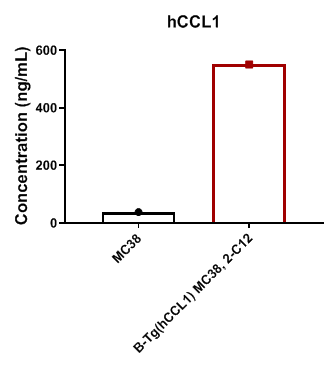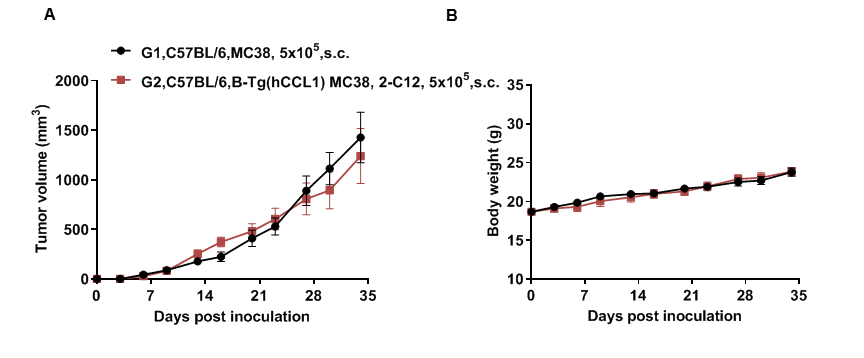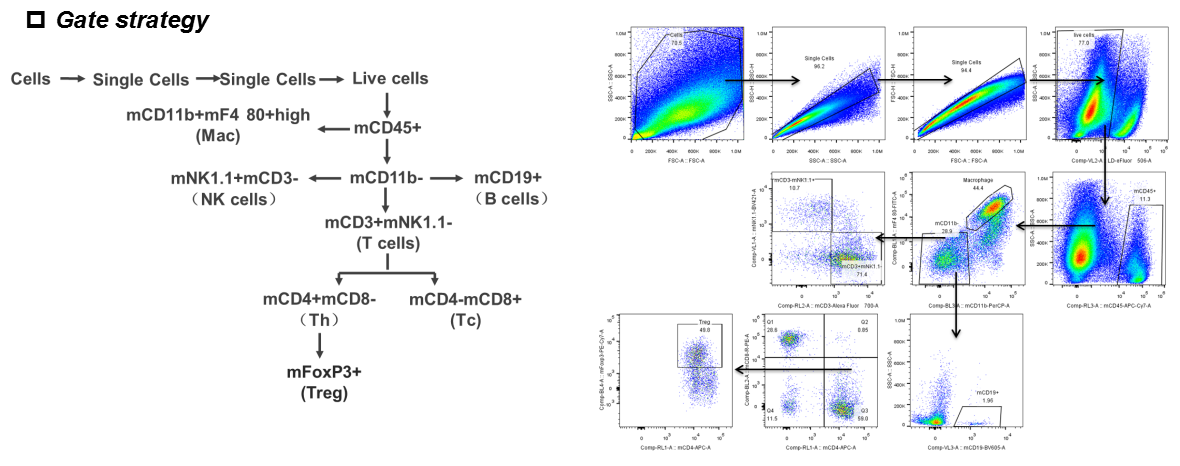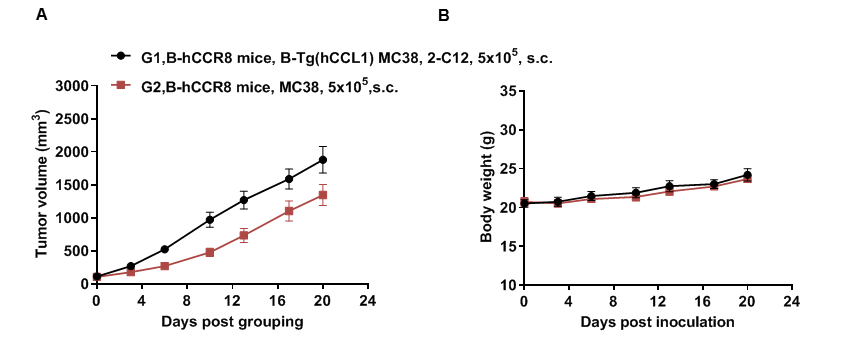Common name
|
B-Tg(hCCL1) MC38
|
Catalog number
|
321855
|
|
Aliases
|
/
|
Disease
|
Colon carcinoma
|
Organism
|
Mouse
|
Strain
|
C57BL/6
|
|
Tissue types
|
Colon
|
Tissue
|
Colon
|
Description
The exogenous promoter and human CCL1 coding sequence were inserted into the mouse genome randomly. Human CCL1 can be secreted by B-Tg(hCCL1) MC38 cells, and drive more T cells into the tumor microenvironment in C57BL/6 mice bearing MC38 cells.
Application
B-Tg(hCCL1) MC38 cells have the capability to establish tumors in vivo and can be used for efficacy studies.
Targeting strategy
Gene targeting strategy for B-Tg(hCCL1) MC38 cells. The exogenous promoter and human CCL1 coding sequence were inserted into the mouse genome randomly.
Protein expression analysis

CCL1 expression analysis in B-Tg(hCCL1) MC38 cells by ELISA. Human CCL1 was detected in the supernatant of B-Tg(hCCL1) MC38 cells but not wild-type MC38 cells. The 2-C12 clone of B-Tg(hCCL1) MC38 cells was used for in vivo experiments.
Tumor growth curve & Body weight changes

Subcutaneous homograft tumor growth of B-Tg(hCCL1) MC38 cells. B-Tg(hCCL1) MC38 cells (5x105) and wild-type MC38 cells (5x105) were subcutaneously implanted into C57BL/6 mice (female, 7-week-old, n=5). Tumor volume and body weight were measured twice a week. (A) Average tumor volume ± SEM. (B) Body weight (Mean± SEM). Volume was expressed in mm3 using the formula: V=0.5 × long diameter × short diameter2. As shown in panel A, B-Tg(hCCL1) MC38 cells were able to establish tumors in vivo and can be used for efficacy studies.
mCCL1/hCCL1 expression analysis in tumor

Tumor cells were harvested at the end of experiment and assessed for mouse and human CCL1 expression by ELISA. As shown, mouse and human CCL1 were all highly expressed in the tumor homogenate. Data was shown as Mean±SEM, and analyzed using One way ANOVA followed Dunnett test compared with G1. (*p<0.05, **p<0.01, ***p<0.001, ****p<0.0001)
Analysis of tumor infiltrates lymphocytes

Analysis of tumor infiltrates lymphocytes

Data was shown as Mean±SEM, and analyzed using One way ANOVA followed Tukey test compared with every other column (*p<0.05, **p<0.01, ***p<0.001, ****p<0.0001)
Tumor growth curve & Body weight changes

Subcutaneous homograft tumor growth of B-Tg(hCCL1) MC38 cells. B-Tg(hCCL1) MC38 cells (5x105) and wild-type MC38 cells (5x105) were subcutaneously implanted into B-hCCR8 mice (female, 8-week-old, n=7). Tumor volume and body weight were measured twice a week. (A) Average tumor volume ± SEM. (B) Body weight (Mean± SEM). Volume was expressed in mm3 using the formula: V=0.5 × long diameter × short diameter2. As shown in panel A, B-Tg(hCCL1) MC38 cells were able to establish tumors in vivo and can be used for efficacy studies.

















